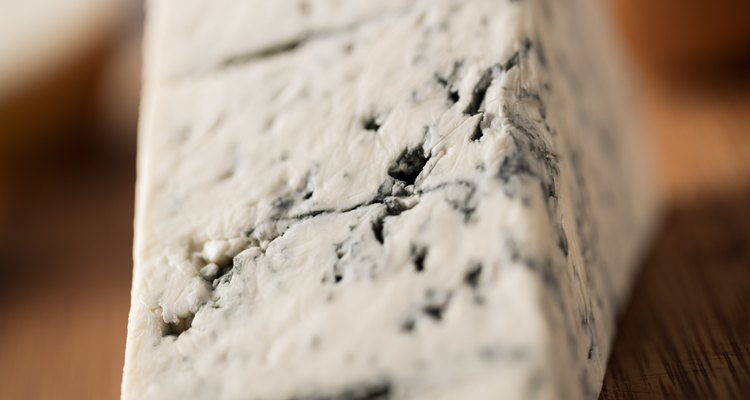
BlakeDavidTaylor/iStock/Getty Images
While you may associate bacteria with illness, in some cases bacteria provide benefits, especially in cheese production. Not all cheeses use bacteria in the cheese-making process. Familiar types such as cheddar and mozzarella rely on certain types of bacteria to give them their particular taste and texture. Because cheese contains milk, it is a good source of calcium. A 1-ounce serving of cheddar contains 204 milligrams of calcium, just over 20 percent of the adult RDA for this nutrient. Good bacteria provides a means of producing this healthy food.
About Bacteria
Bacteria are a group of one-celled organisms that are microscopic in size. Some are harmless to humans, and some carry disease. The latter are called pathogenic bacteria. Some types of bacteria are beneficial to people, including the type used in the production of cheese. It is the kind of bacteria used that gives each type of cheese its unique taste.
History
Cheese-making is believed to have begun over 6,000 years ago. The Egyptians made cheese, as recorded in tomb murals. Whether it was an accidental discovery or intentional is not known. Some of the earliest known cheeses include gorgonzola, roquefort and cheddar. Different types evolved all over Europe, with the cheeses reflecting local cultural preferences as well as terrain differences as they influenced milk production in cows and goats. Varying soil types affect the grazing vegetation that can, in turn, influence the flavor of cheeses.
Bacteria Content
To make cheese, you start with milk. Cheese-making uses lactic acid bacteria from the lactose in milk. These bacteria are cultured, meaning they are produced under artificial conditions. Some of the starter bacteria used to make cheese comes from the genus Lactobacillus, such as Lactococcus lactis subsp. lactis or Lactobacillus helveticus. Yeasts and molds are also used in cheese production for types such as brie and blue cheese. This explains why these cheeses may have different tastes from cheese made from bacteria.
Cheese Processing
The type of bacteria is only the beginning of the cheese production process. After the bacteria is cultured, it is allowed to ripen and develop with the addition of rennet in milk. Rennet is a type of enzyme that is produced in a mammal's stomach that causes the curd, or solid portion of the cheese, to form. The liquid portion is whey. After heating, the two are separated. The cheese is processed further to remove any remaining liquid. Some cheeses may be placed in a salt solution to enhance their taste. Others such as cheddar and gouda may be aged to intensify flavor and increase its complexity.
Related Articles
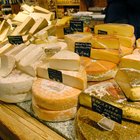
What Type of Microorganism Is Used to ...
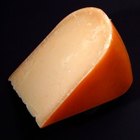
What Is Animal Rennet?
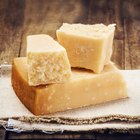
MSG and Parmesan Cheese

Aged Cheeses That Do Not Melt

What Types of Cheeses Are Unpasteurized?

A List of Foods Containing Microbes

What Makes a Cheese Mild, Medium or ...

Facts About Gouda Cheese

What Kind of Cheese Is a Low Melting ...
How to Pan-Fry Cheese

Does a Sliced American Cheese Product ...
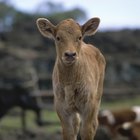
List of Vegetarian Cheeses

The Difference Between Fresh Cheese & ...
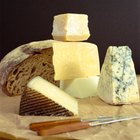
Which Cheeses Contain Animal Rennet?

How to Tell if Mozzarella Is Bad

Cheeses Similar to Feta

Difference Between White Cheddar & ...
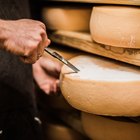
How to Make Muenster Cheese

Do You Thaw Frozen Cheese Before ...
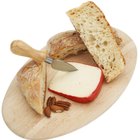
A List of Dutch Cheeses
References
Writer Bio
Chris Dinesen Rogers has been online marketing for more than eight years. She has grown her own art business through SEO and social media and is a consultant specializing in SEO and website development. Her past work experience includes teaching pre-nursing students beginning biology, human anatomy and physiology. Rogers's more than 10 years in conservation makes her equally at home in the outdoors.
Photo Credits
BlakeDavidTaylor/iStock/Getty Images